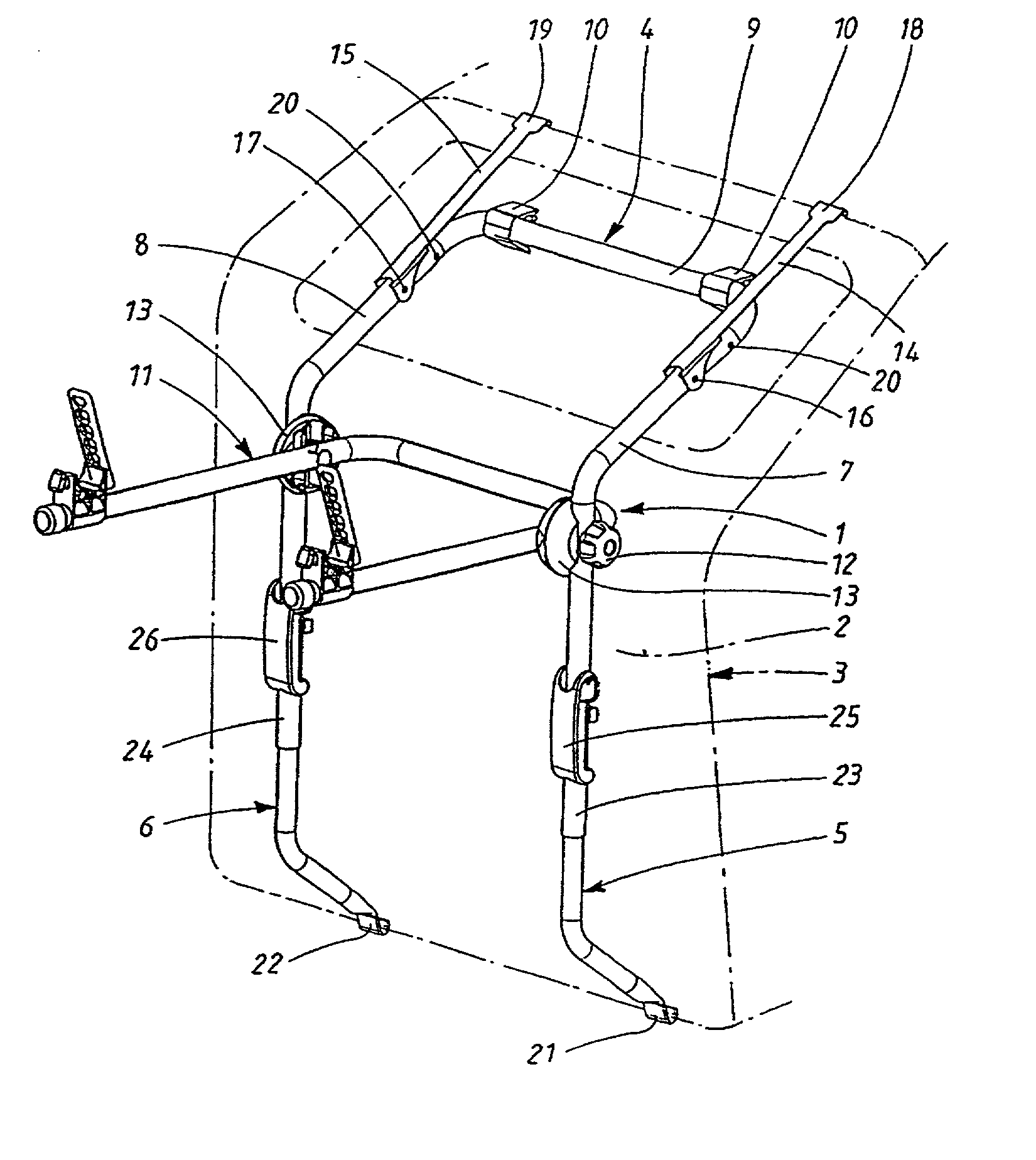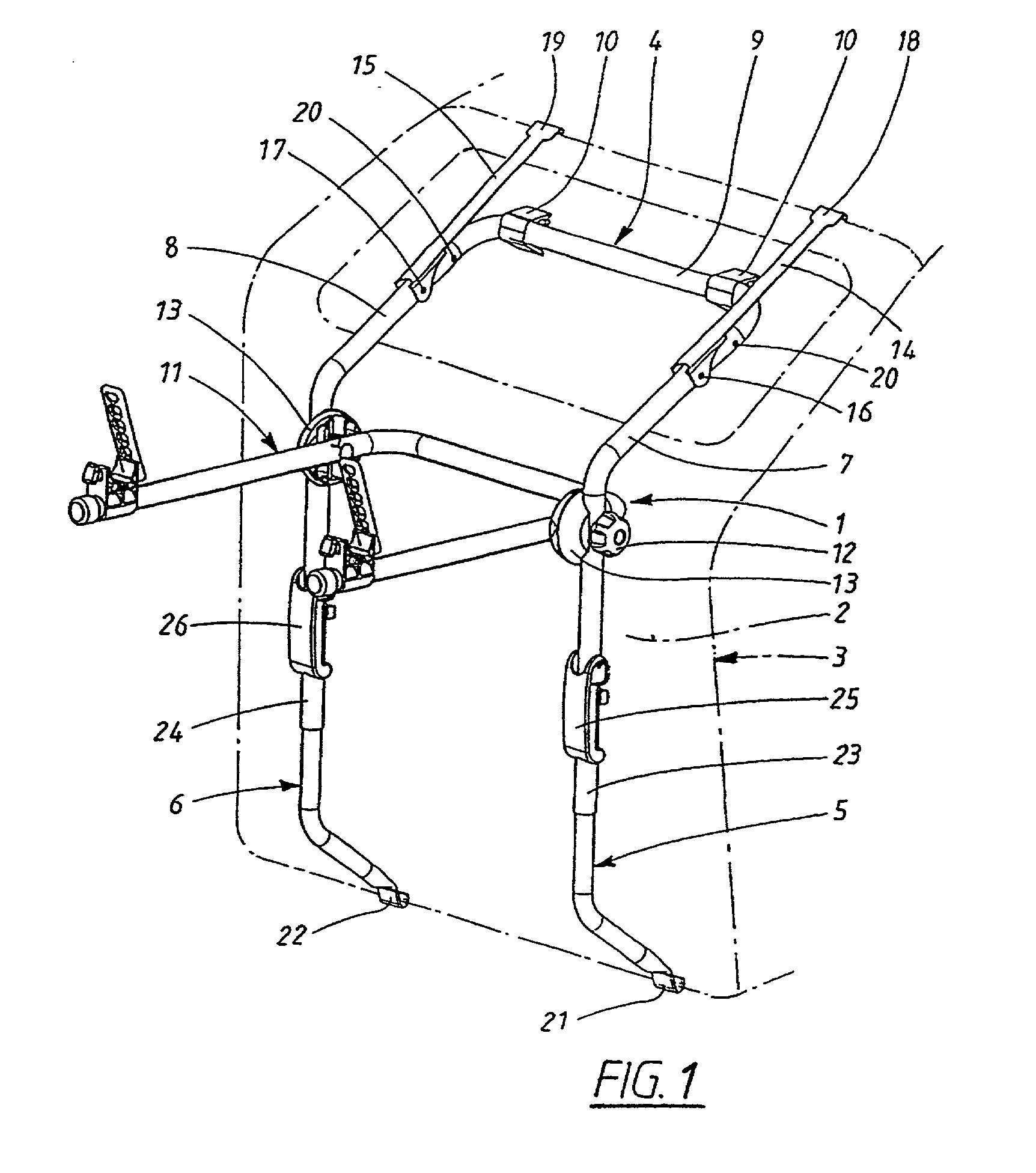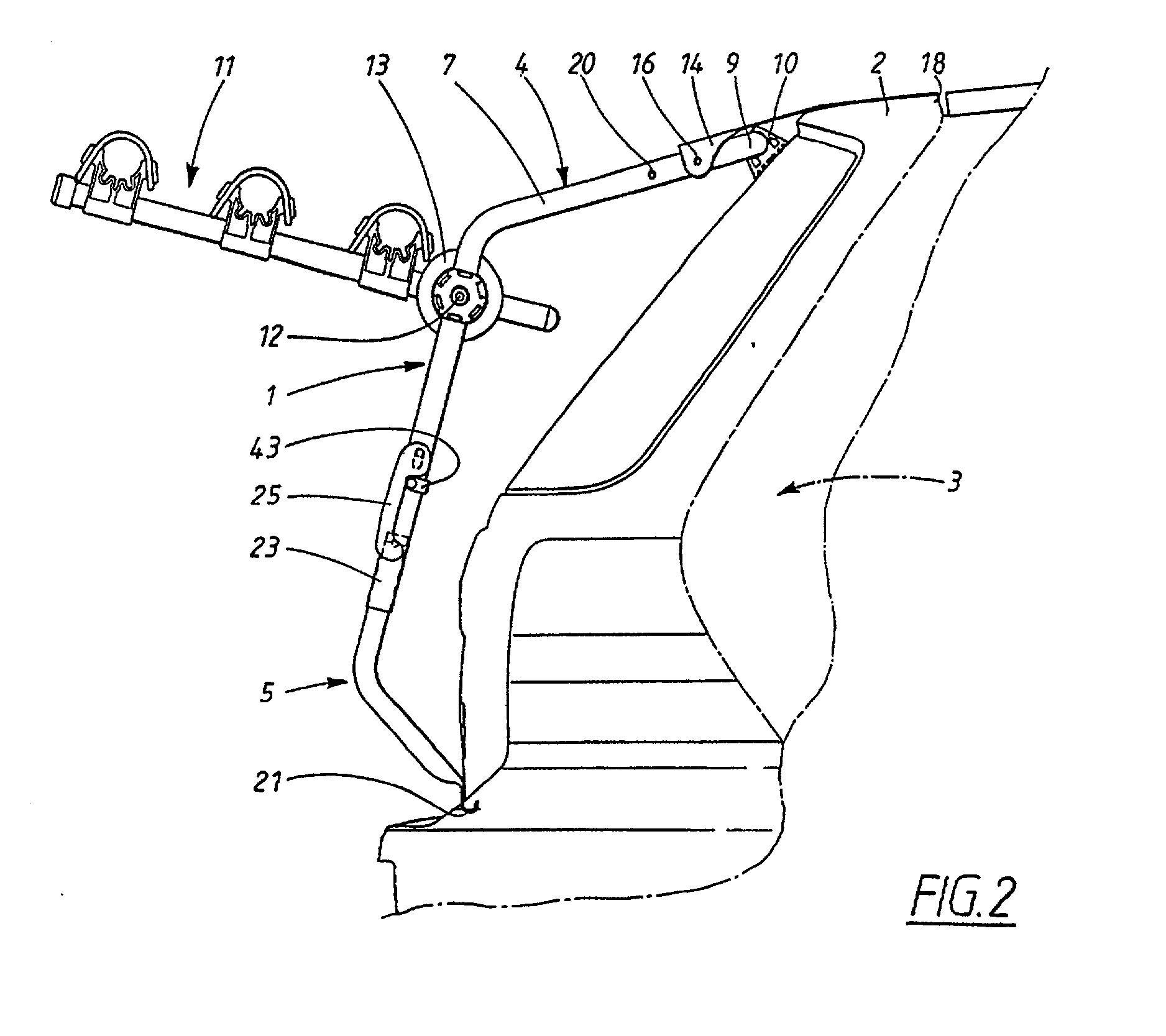Vehicle-mounted load carrier
- Summary
- Abstract
- Description
- Claims
- Application Information
AI Technical Summary
Benefits of technology
Problems solved by technology
Method used
Image
Examples
Embodiment Construction
[0018] It may be seen from FIG. 1 that the load carrier of the present invention includes a load-bearing frame 1, also referred to as a rear-mount vehicular load carrier frame which is shown fastened to the rear hatch or door 2 of a motor vehicle 3 which is indicated by dashed lines. The load-bearing frame has an upper frame section or portion 4 and two lower frame sections or portions 5 and 6. These frame sections are constructed of substantially rigid tubing of substantially circular cross-section. The upper frame section 4 is U-shaped with its arms 7 and 8 pointing at least partly downwards. The two arms or arm portions 7 and 8 and the two lower frame sections or elongate legs 5 and 6 are each bent at respective similarly located points in such a manner that the load carrier stands clear of the hatch and is in contact therewith only at the ends of the lower frame sections 5 and 6 and at the base or bight 9 of the U-shaped member where two rubber feet 10 which are press-fit around...
PUM
 Login to View More
Login to View More Abstract
Description
Claims
Application Information
 Login to View More
Login to View More - R&D
- Intellectual Property
- Life Sciences
- Materials
- Tech Scout
- Unparalleled Data Quality
- Higher Quality Content
- 60% Fewer Hallucinations
Browse by: Latest US Patents, China's latest patents, Technical Efficacy Thesaurus, Application Domain, Technology Topic, Popular Technical Reports.
© 2025 PatSnap. All rights reserved.Legal|Privacy policy|Modern Slavery Act Transparency Statement|Sitemap|About US| Contact US: help@patsnap.com



